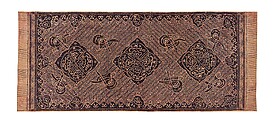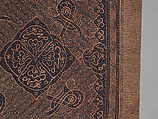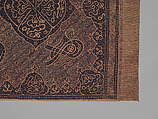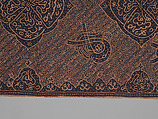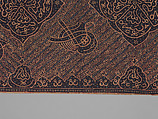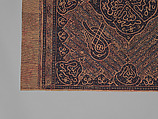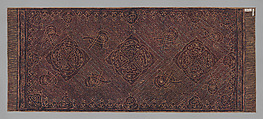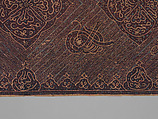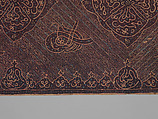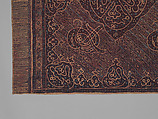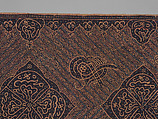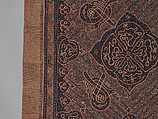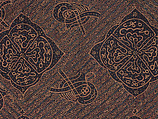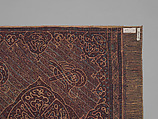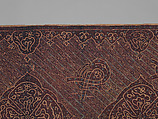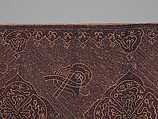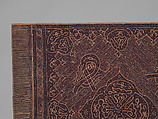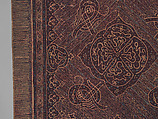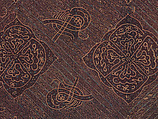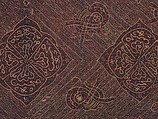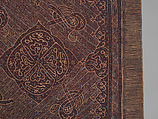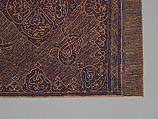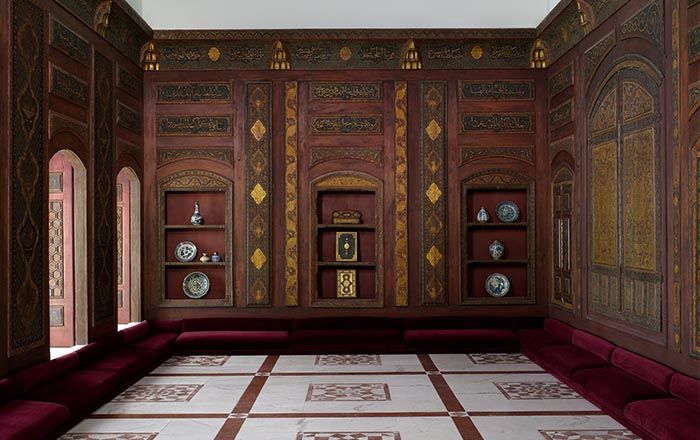Batik with Talismanic Calligraphic Motifs
Not on view
This large rectangular batik from Indonesia is among the rarer examples in purple color. Although made in a typical Southeast Asian textile technique, its design evokes arts of the Ottomans. The overall composition compares with carpets with a center field consisting of three larger lozenge medallions, a border, and on the shorter side a sequence of lines reminding of a carpet’s fringes. The calligraphic composition with repetition of Allah, Muhammad, and perhaps the Basmalla formula, as well as a stylized version of an Ottoman Tughra motif provide this beautiful textile with strong apotropaic powers. Although in an Ottoman context the Tughra represents the symbol of the sultan, ruling authority and power, in Southeast Asia such calligrams functioned as talismans often appearing in devotional and ritual contexts, placed for example in mosques a top of mihrab prayer niches. The prominent use of the Tughra together with the inscriptions of Allah and Muhammad, suggests that the batik was likely used in a ceremonial or devotional context. Perhaps worn wrapped around the head similar to a ceremonial headdress or used in another ritual context.
This image cannot be enlarged, viewed at full screen, or downloaded.
This artwork is meant to be viewed from right to left. Scroll left to view more.


